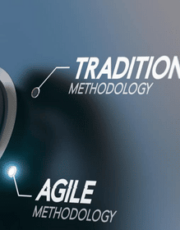Evergent Team Insights on the Critical Rise of Bundling to Contextual Ads and What’s Working for Revenue and Retention Strategies
The Evergent team had the privilege of attending the StreamTV Show in Denver this June, where industry leaders gathered to discuss the future of video on demand (VOD). We came away with several key insights that promise to shape the direction of our industry.
Here are the top trends and insights we noted based on show floor conversations and our team's attendance at a wide array of sessions, combined to paint a fascinating portrait of the industry’s present and future:
1. The Strategic Advantage of Bundling
Bundling emerged as a crucial strategy for reaching audiences more effectively and reducing customer acquisition costs (CAC). Liz Spaulding from Britbox, an Evergent customer, emphasized that bundling provides ease for viewers by consolidating content, offering a more streamlined viewing experience. Experts like Giles Tongue, of Bango, highlighted that bundling not only reduces CAC but also creates stickier customers, making them less likely to churn.
This strategy extends beyond traditional media services. For example, Amazon bundles Amazon Prime with shipping services, providing additional value to consumers and encouraging loyalty. By exploring bundling opportunities, we can enhance our offerings and build a more loyal customer base.
2. Contextual Advertising is the Future
The consensus at the show was clear: contextual advertising is set to revolutionize the industry. Contextual ad targeting addresses many current challenges in streaming advertising by providing relevant ads and addressing issues like over-frequency, privacy concerns, and measurement problems. The focus is on aligning advertisements with the content being viewed, making ads more relevant and engaging. Imagine watching a bar scene in a movie and seeing a beer commercial – this kind of synchronization can significantly enhance viewer engagement and ad effectiveness.
Moreover, making ads contextually relevant to the viewer's environment, like showing raincoat ads when it's raining, can further enhance the viewing experience. This level of personalization not only grabs attention but also increases the likelihood of conversion. Contextual targeting can range from genre and actors to emotions and on-screen actions. It also helps advertisers find relevant content in traditionally avoided genres like news. As contextual targeting improves, it promises more precise and effective advertising. As we continue to develop our advertising strategies, integrating contextual relevance will be a key focus.
3. The Evolution and Customization of FAST
FAST (Free Ad-Supported Streaming TV) is evolving and remains a vital part of the TV landscape. Companies like Google TV and Vizio are focusing on balancing quality and quantity, launching new channels for content discovery, and personalizing recommendations to enhance viewer engagement. The future of FAST involves improving user experiences, particularly in integrating linear and on-demand content. This includes allowing users to switch seamlessly between watching a series on linear and on-demand. Personalization of the home screen and ads is also a priority.
The ability to customize FAST channels and content recommendations allows us to cater to diverse audience preferences, making the viewing experience more enjoyable and engaging. As FAST continues to evolve, it will be essential to stay ahead of trends and continuously improve our offerings. Niche services can survive by offering strong products and building loyal user bases. Increasing programming hours is also crucial as channel partners demand larger libraries.
Additionally, SVOD services are expected to roll out FAST services in regions where consumers can't afford TV subscriptions, such as the Global South. These FAST services will likely become a standard offering alongside subscription tiers, aiming to convert viewers into subscribers by showcasing older seasons of originals.
4. Optimizing Subscriber Revenue Through Integrated Experiences
Integrating experiences across multiple screens and delivering content at various endpoints is key to optimizing subscriber revenue. Ana Kehrberg from AMC Networks discussed strategies like embedding AMC+ in Philo to reduce churn and drive revenue per user (RPU).
Bundling strategies can extend beyond traditional media services to include essential products, creating a more integrated consumer experience. This approach demonstrates how bundling content services with everyday essentials can massively reduce churn and create a more integrated consumer experience.
5. Innovative Retention Strategies Beyond Price Reduction
Retention strategies are evolving beyond mere price reductions. Chima Ogbuokiri from AMC Networks highlighted the potential of partnering with other essential services to enhance value. He also spoke about topping up outbound marketing efforts via emails, SMS, and third-party collaborations, with AI and dynamic personalization to further improve customer retention and engagement.
These innovative retention strategies offer a more holistic approach to customer satisfaction. By leveraging AI and dynamic personalization, we can create more meaningful interactions with our subscribers, leading to higher retention rates and overall satisfaction.
6. The Battle For The TV OS
The battle for the TV operating system (OS) was on the minds of many at the show. Per multiple reports, each fraction of a percentage point in market share can translate to tens of millions of dollars. While 40% of the market is still up for grabs, mostly outside the US, this battle often flies under the radar domestically, according to presenters. Although user experience is crucial, price tends to be a more significant factor since there hasn't been much innovation in TV sets for several years.
TV OEMs keep prices down through ad revenue generated from their OS homepages and FASTs. Additionally, these operating systems hold vast amounts of data, which can be used to enhance content discovery and personalization, especially with the advent of AI.
7. The Future of Personalized Channels
Personalized channels were another focal point, touched upon frequently. The concept was discussed via the example of how TV would evolve similarly to Spotify’s Daily Mixes. That idea, based on our observations at the show, is moving more toward reality, with TV services increasingly offering personalized viewing experiences.
8. The Shift to Streaming for Local Broadcast
Local broadcast faces significant challenges as streaming advances. FAST offers an ideal solution, enabling local broadcasters to move their news shows online, personalize them, and maintain dominance in the ad market. However, this shift comes with hurdles, including competition from streaming companies and start-ups targeting local news, and the fact that all advertising is becoming increasingly local due to geotargeting.
Conclusion
The StreamTV Show in Denver provided invaluable insights into the future of television streaming. From contextual advertising to innovative retention strategies and insights from a great collection of industry leaders, the trends discussed promise to shape our industry in exciting ways.
As we at Evergent continue to innovate and adapt, these insights will guide our efforts to enhance user experiences, optimize subscriber revenue, and stay ahead in an increasingly competitive streaming landscape.
If you found these insights helpful and wish to explore them further with a member of our expert team, book your 1:1 meeting today.




